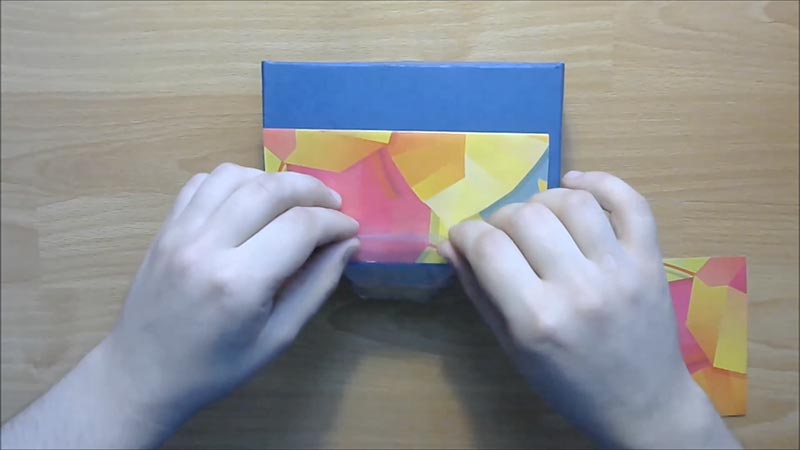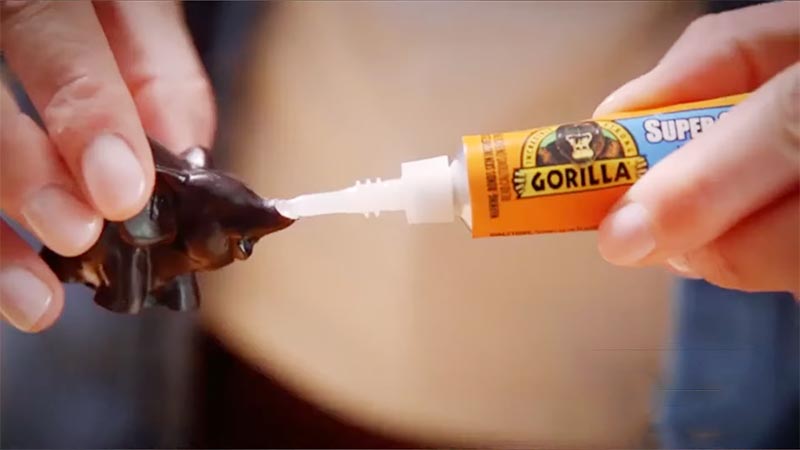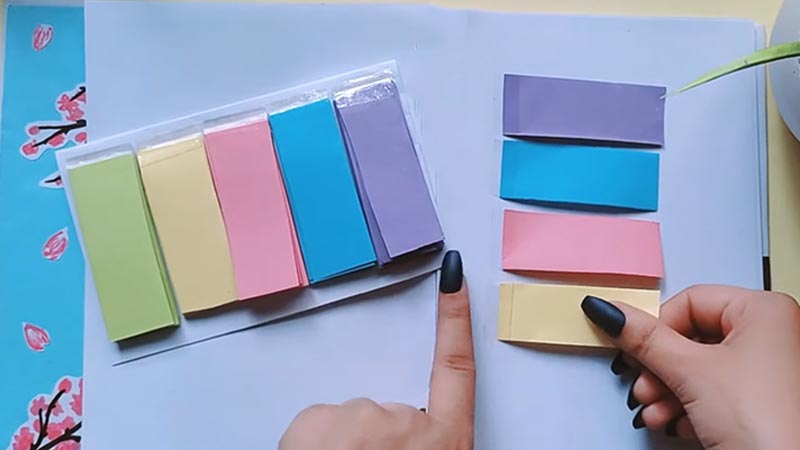Intertwining paper and plastic requires the right technique and adhesive for a seamless bond. Knowing how to stick paper to plastic opens a realm of possibilities, whether for crafting, repairs, or creative projects.
This guide outlines essential steps and tips to ensure a durable and aesthetically pleasing union. From choosing the appropriate adhesive for your materials to preparing surfaces for optimal adhesion, each step is pivotal.
Factors like surface texture, temperature, and drying time are crucial for a long-lasting connection.
By following these instructions, you’ll master the art of affixing paper to plastic, unlocking a world of versatile applications.

How to Stick Paper to Plastic?
Sticking paper to plastic can be done effectively using a few different methods, depending on your specific needs and the type of plastic and paper you are working with.
Here’s a step-by-step guide for two common methods.
Materials you’ll need:
- Paper
- Plastic surface
- Adhesive (choose one from the options below):
- Double-sided tape
- Craft glue
- Mod Podge (a popular craft adhesive)
- Spray adhesive
Steps:
Clean the Plastic Surface
Before applying any adhesive, ensure that the plastic surface is thoroughly cleaned. Use a mild cleaning solution (like dish soap and water) and a soft cloth to wipe down the plastic.
This will remove any dust, dirt, or oily residues hindering adhesion.
Select the Right Adhesive
Choosing the right adhesive is crucial for a strong and long-lasting bond. Consider factors like the type of plastic and paper you’re using.
For example, double-sided tape might be sufficient if you’re working with lightweight paper and smooth plastic.
However, a liquid adhesive like craft glue or Mod Podge may be more effective for more porous or textured surfaces.
Test the Adhesive
If you’re uncertain how the adhesive will interact with your specific materials, performing a small test is always a good idea.
Apply a small amount of the chosen adhesive on a hidden area of the plastic and a spare piece of paper. Allow it to dry, and check for any adverse reactions or weak adhesion.
Apply the Adhesive
Double-Sided Tape
Ensure that the tape is cut to the desired length and width. For larger surfaces, you might need multiple strips. When applying the tape, ensure it’s smooth and firmly adhered to the plastic surface.
When peeling off the second side of the tape, do it slowly and carefully to avoid any accidental folding or sticking.
Craft Glue
Apply a thin, even layer of craft glue onto the plastic surface. Be cautious not to use too much, as excess glue can cause the paper to warp or wrinkle.
If using a brush, ensure it’s clean and free from any old glue residue. Gently press the paper onto the glued area, starting from one edge and smoothing outwards.
Mod Podge
Use a clean brush to apply a thin, even layer of Mod Podge onto the plastic surface. Work in one direction to avoid streaks.
Press the paper onto the wet Mod Podge, starting from one edge and smoothing it out as you go. If desired, apply another layer of Mod Podge over the paper to seal it and provide extra protection.
Spray Adhesive
Ensure you are in a well-ventilated area and cover any surrounding surfaces with newspaper or a drop cloth. Hold the spray adhesive can at the recommended distance from the surfaces and apply an even coat.
Follow the instructions on the can carefully. Allow the adhesive to become tacky before carefully aligning and pressing the paper onto the plastic surface.
Smooth out any Air Bubbles
After applying the paper, use a clean, dry cloth or a smooth tool like a credit card to press down on the surface gently.
Start from the center and work outwards to eliminate any air bubbles or wrinkles. Take your time and be gentle to avoid damaging the paper.
Allow Adequate Drying Time
The drying time will vary depending on the type of adhesive used. Read the manufacturer’s instructions for the specific adhesive you chose and allow sufficient time for it to dry and set fully.
Seal with a Clear Sealer
If you want to provide extra protection and ensure the paper stays in place, consider applying a clear sealer or varnish.
Ensure it is compatible with paper and plastic and follow the manufacturer’s instructions for application and drying times. This step can also enhance the overall appearance of the project.
Precaution for Selecting Adhesive

Selecting the right adhesive is crucial for a successful project when sticking paper to plastic.
Here are some precautions to keep in mind when choosing an adhesive:
Consider Material Compatibility
Ensure that the adhesive you choose is compatible with both the paper and plastic you plan to use. Some adhesives may work well with certain types of paper but not with others. Compatibility can vary based on factors like paper thickness, texture, and the type of plastic.
Read Manufacturer’s Recommendations
Always check the manufacturer’s recommendations and guidelines for the adhesive. These instructions often include information about the types of materials the adhesive is best suited for and the recommended application methods.
Understand Drying Time
Different adhesives have varying drying times. Consider how much time you have for your project and whether you need an adhesive that dries quickly or allows for some repositioning. Rushing the drying process can lead to uneven bonding.
Assess Long-Term Durability
Depending on your project’s purpose, consider the long-term durability requirements. Some adhesives may be more suitable for temporary applications, while others are designed for permanent bonding. Choose accordingly.
Check Toxicity and Safety
Be aware of the safety and toxicity of your adhesive, especially if you’re working in a confined space.
Some adhesives emit strong fumes or contain hazardous chemicals. Always use adhesives in well-ventilated areas and follow the safety precautions mentioned in the product’s safety data sheet.
Evaluate Ease of Use
Consider the ease of application and the tools required. Some adhesives, like double-sided tape, are straightforward to use, while others may need brushes, rollers, or spray applicators. Choose an adhesive that matches your comfort level with application tools.
Test on a Small Scale
Before using the adhesive on your main project, conduct a small-scale test on a spare piece of paper and plastic to ensure it adheres properly and dries as expected. This helps you avoid surprises on your actual project.
Plan for Cleanup
Different adhesives require different cleanup methods. Some may be water-soluble, while others may need solvents for removal. Be prepared for cleanup based on the adhesive you select.
Consider Environmental Impact
If environmental concerns are important to you, look for adhesives that are labeled as eco-friendly or water-based. These options are typically less harmful to the environment.
Ask for Recommendations
If you’re unsure about which adhesive to choose, consider asking for recommendations from experienced crafters, DIY enthusiasts, or professionals who have worked with similar materials.
They may have valuable insights based on their experiences
How do you avoid wrinkles when sticking paper to plastic?

Avoiding wrinkles when sticking paper to plastic requires careful application and attention to detail.
Here’s a step-by-step guide:
Prepare the Surface
Ensure the plastic surface is clean, dry, and free from dust, dirt, or oily residues. A clean surface provides a better foundation for adhesion.
Apply Adhesive Evenly
Whether you’re using double-sided tape, craft glue, Mod Podge, or spray adhesive, make sure to apply it evenly across the plastic surface. Avoid using too much adhesive to prevent excess moisture, leading to wrinkles.
Position the Paper Carefully
Once the adhesive is applied, carefully position the paper onto the plastic surface. Ensure it’s aligned correctly before pressing it down.
Smooth from the Center Outwards
Start from the center of the paper and gently press outward using a clean, dry cloth or a smooth tool like a credit card. This helps to remove any air bubbles or wrinkles. Use even, gentle pressure to avoid tearing the paper.
Work Slowly and Patiently
Take your time while smoothing out the paper. Rushing can lead to accidental creases or tears.
Adjust if Necessary
If you notice any wrinkles forming while smoothing the paper, carefully lift and reposition it. Make sure to realign it properly before continuing to smooth it out.
Allow for Drying Time
Depending on the type of adhesive used, allow sufficient time for it to dry and set. Follow the manufacturer’s recommended drying times.
Consider Using Thinner Paper
Thinner papers are more flexible and may be less prone to wrinkling. Experiment with different paper types to find one that adheres well without wrinkling.
Test in a Small Area First
If you’re unsure about how a particular paper will react with the adhesive, perform a small test on a spare piece of plastic and paper before applying it to your project.
Tips for Sticking Paper to Plastic
Sticking paper to plastic can be a bit challenging because plastic surfaces are often smooth and non-porous, making it difficult for adhesives to bond effectively.
However, there are several methods and tips you can try to ensure a secure bond between paper and plastic:
Creating a Textured Surface
If you’re working with a glossy plastic surface, consider lightly sanding it to create a rougher texture. This can help the adhesive bond more effectively.
Before applying any adhesive, preparing the plastic surface properly is crucial. This is especially important when dealing with glossy or smooth plastics.
By lightly sanding the surface, you create micro-abrasions that provide a better grip for the adhesive.
Safety and Ventilation
Always use adhesives in a well-ventilated area and follow the safety instructions provided by the manufacturer.
Adhesives can sometimes emit fumes that may be harmful if inhaled. Ensure you’re working in a space with good airflow.
Additionally, carefully read and follow the safety instructions provided by the adhesive manufacturer. This may include using gloves or a mask for added protection.
Compatibility Testing
Test the adhesive on a small, inconspicuous area of the plastic and paper to ensure compatibility and avoid any damage.
Before applying the adhesive to the entire surface, performing a compatibility test is wise. Apply a small amount of the adhesive to a hidden or inconspicuous area of both the plastic and paper.
Allow it to dry, and check for any adverse reactions such as discoloration or warping. This step can save you from potential damage to your materials.
Temperature Considerations
Ensure the working environment and materials are at a suitable temperature for adhesion.
Extreme temperatures can affect the performance of adhesives. Aim for a moderate temperature range, ideally between 60°F (15°C) and 80°F (27°C).
Both the plastic surface and the paper should be at a similar temperature to prevent any issues with bonding.
Weight Distribution and Pressure
Apply even pressure to the bonded areas for a secure attachment. After positioning the paper on the plastic, use a clean cloth or your fingers to apply pressure evenly across the entire surface.
This step helps to eliminate air bubbles and ensures a strong bond between the paper and plastic. Pay extra attention to edges and corners.
Allow Sufficient Drying Time
Rushing the drying process can lead to a weaker bond. Follow the manufacturer’s recommendations for drying times, and consider allowing extra time if the environment is particularly humid.
This patience will result in a more secure and long-lasting attachment.
FAQS
Can I use regular school glue to stick paper to plastic?
While it can work, it’s often not the best choice. It’s better to use adhesives designed for paper and plastic to ensure a secure bond.
Will double-sided tape hold paper on plastic permanently?
Double-sided tape can provide a stronghold, but its longevity depends on the quality of the tape and environmental factors. For long-term adhesion, consider other adhesive options.
Is it necessary to roughen the plastic surface before sticking paper?
Roughening the surface, especially for glossy plastics, can improve adhesion. However, it may not be required for all plastic surfaces; a compatibility test with your adhesive is recommended.
How long should I wait for the adhesive to dry when sticking paper to plastic?
Drying times vary depending on the adhesive used.
Always follow the manufacturer’s instructions for specific drying times to ensure a secure bond.
Can I remove paper from plastic after it’s been stuck without damaging either material?
The ease of removal depends on the adhesive used and the duration of attachment. Some adhesives allow for relatively easy removal, while others may leave residue or damage the materials.
To Wrap Up
Adhering paper to plastic involves a systematic approach for a secure and aesthetically pleasing bond.
Preparing the plastic surface with care, selecting the appropriate adhesive, and ensuring precise alignment are crucial steps.
Clear craft glue or rubber cement works well for lightweight papers, while spray adhesive or double-sided tape suits larger or heavier pieces.
Thorough smoothing and removal of air bubbles contribute to a seamless finish. Patience during the drying process ensures a lasting connection.
Whether for crafts, presentations, or DIY projects, mastering this technique empowers individuals to create visually appealing and functional items that integrate paper and plastic effectively.
Leave a Reply